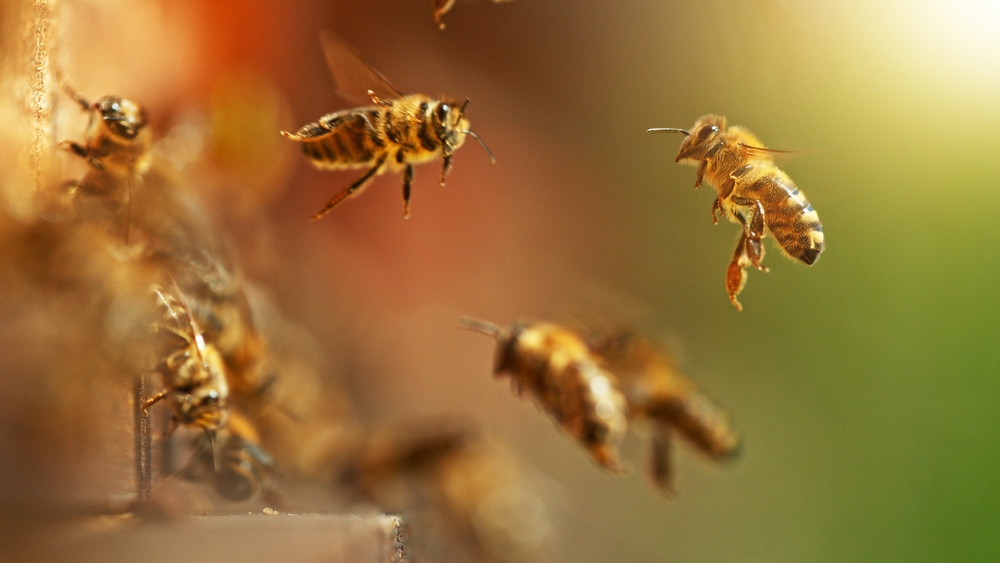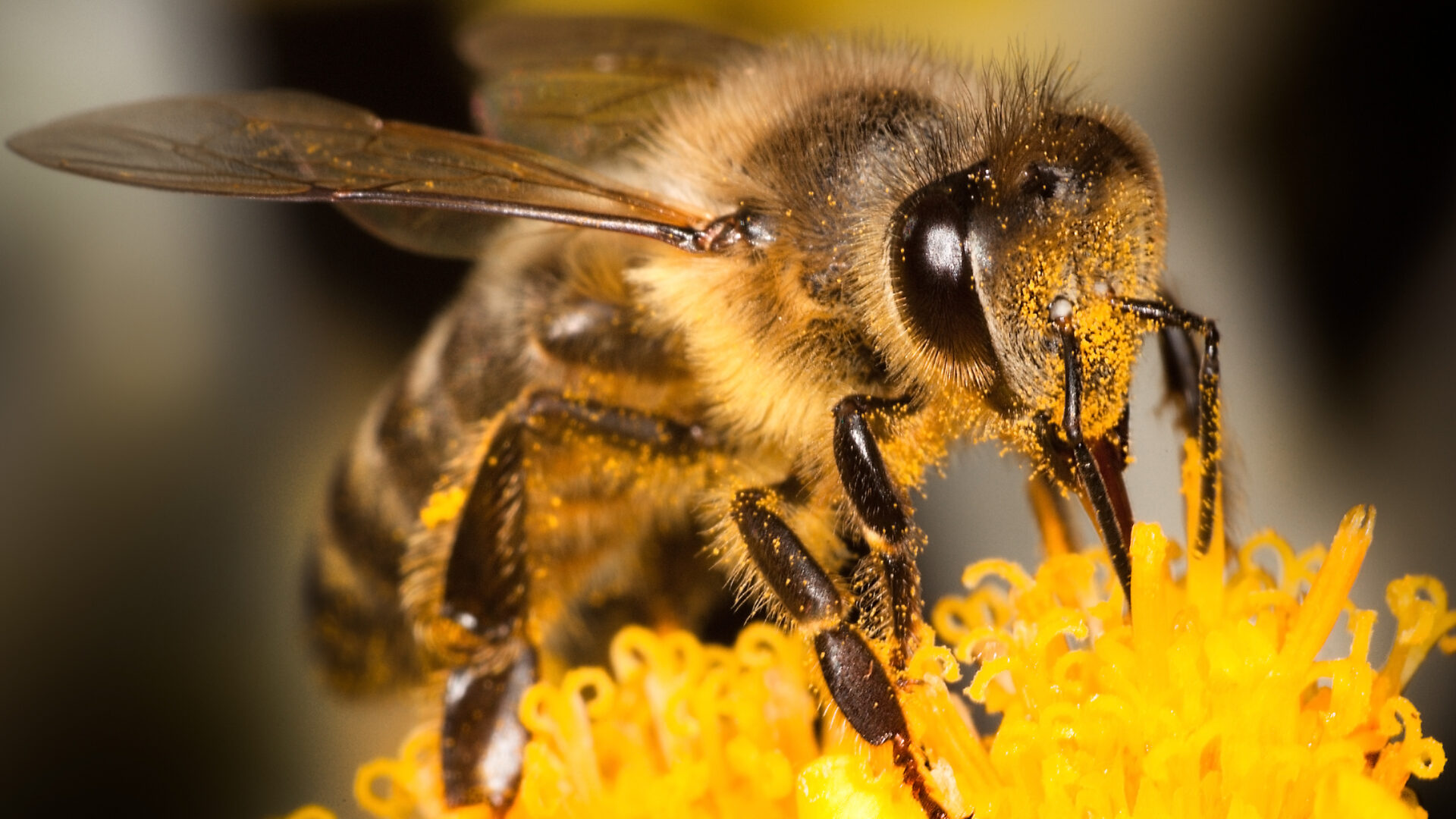In recent years, the buzz about bees has taken on a more somber tone as the decline in their populations emerges as a global concern. This decline, intricately linked to the delicate balance of ecosystems, highlights the vital role bees play as pollinators. From the hillsides of rural farms to the concrete jungles of urban gardens, bees diligently flit from flower to flower, facilitating the reproduction of plants and the production of fruits and seeds. Yet, these industrious insects face an array of challenges, from habitat loss and pesticide exposure to the insidious threat of pathogens.
Challenges in Bee Health and Ecosystem Impact
Bees aren’t just important for honey production; they’re essential for maintaining the balance of ecosystems. Their diligent pollination efforts directly impact agricultural productivity and the maintenance of biodiversity. As bee populations dwindle, the ripple effects are felt across the globe, threatening food security and the resilience of ecosystems.

Pathogens Threatening Bee Health
Bees, like any other living organisms, are not immune to the threat of disease. They face a barrage of pathogens, including bacteria, fungi, and viruses. Among these, the bacterial culprit Paenibacillus larvae looms large, causing American foulbrood—a devastating disease that leads to larval mortality and hive collapse. Meanwhile, fungal pathogens like Ascosphaera apis trigger chalkbrood disease, stunting larval development. Adding to the woes is the presence of viral infections like Deformed wing virus (DWV), which impairs bee flight and contributes to the mysterious phenomenon of colony collapse disorder.
Emerging Bee Pathogens
Recent research has unveiled new players in the bee health drama, including Lotmaria passim, associated with the Israeli acute paralysis virus (IAPV) complex, and European foulbrood. European foulbrood, caused by the bacterium Melissococcus plutonius, poses a significant threat to bee populations and overall hive health. This bacterial infection primarily affects honeybee larvae, leading to their premature death and weakening of the colony. As infected larvae decompose, they release spores, further contaminating the hive environment and potentially spreading the disease to healthy individuals. The impact of European foulbrood on bee populations can be devastating, as it can result in colony collapse and significant economic losses for beekeepers. According to a study published in the journal “PLoS ONE,” European foulbrood has been identified as a major contributor to honeybee population decline worldwide (Genersch et al., 2006). Efforts to manage and control this disease are crucial to safeguarding bee populations and maintaining the vital role bees play in pollination and ecosystem health. Unfortunately, though, this pathogen is notoriously difficult to diagnose using traditional culture methods, leaving most laboratories unable to diagnose this pathogen. Dr. Joerg Mayer, a full professor in zoological medicine, a board certified veterinarian in exotic animal medicine at the University of Georgia, says “The NGS technique as offered by MiDOG is wonderful because pathogens like Melissococcus plutonius, for example, are difficult to grow and keep alive in the laboratory. A standard laboratory cannot truly examine or even properly diagnose this pathogen in bee hives at this time. But with NGS, we can reliably diagnose it.”
These emerging pathogens pose new challenges to the already delicate balance of bee health management strategies.
Understanding the Bee Microbiome

Within the buzzing hive lies a hidden world—the bee microbiome—a rich tapestry of microorganisms residing in bee guts and other tissues. These microbiomes include bacteria, fungi, viruses, and other microorganisms, forming complex ecological networks. By studying the composition and function of bee microbiomes, researchers aim to identify beneficial microorganisms that could be harnessed to enhance bee immunity and resilience to pathogens.
This microbial community wields immense influence over bee health and resilience. Deciphering its secrets holds the key to enhancing bee well-being and curbing the impacts of disease.
Among the researchers contributing significantly to the understanding of bee microbiomes is Dr. Joerg Mayer. Dr. Mayer and his team have conducted pioneering studies on the microbial communities associated with bees and their implications for bee health.
Dr. Mayer’s work has shed light on the intricate relationships between bee microbiomes, environmental factors, and disease susceptibility. His research has revealed the diversity of microorganisms inhabiting bees and their dynamic interactions within bee colonies. Through innovative molecular techniques and bioinformatic analyses, Mayer has unraveled the functional roles of specific microbial taxa in bee nutrition, immunity, and pathogen defense.
Key Bacteria Associated with Bee Health
Among the microbial inhabitants of bees, certain bacteria stand out as guardians of health. Lactobacillus and Bifidobacterium, renowned for their probiotic properties, play pivotal roles in bolstering bee immune function and maintaining microbial balance within the hive.
As we delve deeper into the microscopic world of bees, the importance of supporting research efforts becomes ever more apparent. Dr. Mayer and his team at UGA are at the forefront of this critical endeavor, but they can’t do it alone. Your support can make a real difference in safeguarding these essential pollinators and preserving the delicate balance of our ecosystems. Join us in our mission to ensure a thriving future for bees and the planet they call home.
Please consider donating for this great case by clicking below.
References:
Engel P, Martinson VG, Moran NA. Functional diversity within the simple gut microbiota of the honey bee. Proc Natl Acad Sci U S A. 2012;109(27):11002-11007.
McFrederick QS, Wcislo WT, Taylor DR, Ishak HD, Dowd SE, Mueller UG. Environment or kin: whence do bees obtain acidophilic bacteria? Mol Ecol. 2012;21(7):1754-1768.
Goulson D, Nicholls E, Botías C, Rotheray EL. Bee declines driven by combined stress from parasites, pesticides, and lack of flowers. Science. 2015;347(6229):1255957.
Kwong WK, Moran NA. Gut microbial communities of social bees. Nat Rev Microbiol. 2016;14(6):374-384.
Raymann K, Moran NA. The role of the gut microbiome in health and disease of adult honey bee workers. Curr Opin Insect Sci. 2018;26:97-104.
Maine Department of Agriculture, Conservation and Forestry. “Diseases of Honey Bees.” https://www.maine.gov/dacf/php/apiary/documents/factsheets/diseases.pdf
Nazzi, Francesco, and Jay D. Evans. “Ecology and Pathophysiology of the Honey Bee Gut Pathogen Nosema ceranae.” Journal of Invertebrate Pathology, vol. 103, no. Supplement 1, 2010, pp. S10–S19. https://www.ncbi.nlm.nih.gov/pmc/articles/PMC7783639/#:~:text=Moreover%2C%20most%20common%20viruses%20that,bee%20paralysis%20virus%20(SBPV)%2C.
Genersch, E., Forsgren, E., Pentikäinen, J., Ashiralieva, A., Rauch, S., Kilwinski, J., & Fries, I. (2006). Reclassification of Paenibacillus larvae subsp. pulvifaciens and Paenibacillus larvae subsp. larvae as Paenibacillus larvae without subspecies differentiation. PLoS ONE, 1(1), e45. https://doi.org/10.1371/journal.pone.0000045
Categories: Gut Microbiome, Insects

